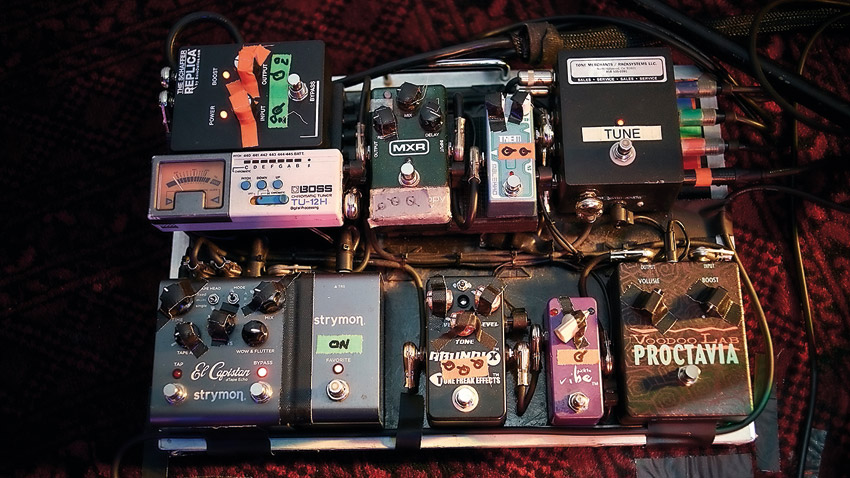9 ways to add lo-fi processing to your sounds
Production tips and tricks from the wrong side of the tracks

The majority of software instruments, multisampled libraries, ROMplers and even today’s new hardware synthesisers all output signals that are more polished than ever before.
Outside of the underground electronic music scenes, tastes lean towards the uber-bright, loud, crystal-clear mixes we associate with cutting-edge pop, dance and rock.
Yet despite current trends for high-fidelity sonics, electronic music has always kept one foot in the world of dirt, grit and aural imperfection. From the tape-splicing techniques pioneered by Delia Derbyshire and the BBC Radiophonic Workshop back in the 1950s, through to Kraftwerk’s primitive robo-pop, and onto The Prodigy’s sampler-driven rave anthems and Aphex Twin’s distorted breakbeat-slicing, underground dance music has always adopted a rebellious DIY aesthetic.
Here, then, are nine proven techniques for messing up your sounds – in a good way!

1. Drive, distortion and saturation
If there’s one effect synonymous with lo-fi sonics and signal degradation, it’s got to be distortion. The waveform-crushing sounds of overloading circuitry have influenced all manner of raw, aggressive effects.
When embarking on a journey of lo-fi sound design and processing, your first move should be to reach for a distortion plugin or analogue drive stage of some sort. At the extreme end of the scale, you’ve got nasty-sounding guitar amps, pedals and overdrive, which will completely obliterate a signal into distorted mayhem.
Somewhere in the middle sit digital distortion, bitcrushing and sample-rate reduction, for applying harsh aliasing and waveform-munching. Then there are the subtler types of saturation and drive, which can still add noticeable heat and aggression when pushed to overt settings.
Want all the hottest music and gear news, reviews, deals, features and more, direct to your inbox? Sign up here.
2. Bring the noise
When working in the studio, keep an ear out and record any analogue hiss, system noise, hum, feedback or other seemingly undesirable signal that might occur. Collect these files over time to compile a collection of bespoke noise samples for use in your tunes.
3. EQ and filtering
It doesn’t take a genius to figure out that signals with more high-frequency content will naturally sound more refined and polished. So to get a lo-fi edge, you can simply roll off high frequencies with an EQ or low-pass filter!
Plus, low-pass filtering is the best way to reign in the exaggerated high end that lo-fi processes such as distortion and bitcrushing can create.
To add back mix presence in the absence of extreme treble, push up a small EQ bump somewhere around 1-6kHz (depending upon your source material) to shift the signal’s overall emphasis. Boost this to extremes for nasty, distorting equipment sounds.
4. Play with time
Use your DAW or sampler’s timestretching capabilities to shorten or lengthen sounds to absolute extremes - the bitty artefacts from the exaggerated warping can give a boring sound some much-needed characterful grit. The same applies to pitchshifting, too!
5. Excessive compression
When your aim is sonic degradation, you need to ignore all the commonly-cited production and mixing clichés. Although most commonly used for transparent levelling, a compressor is a great option when you want to impart a sense of dynamic ‘messiness’ and movement.
When applied in conjunction with other analogue-emulating processes such as EQ and distortion, a forceful dose of gain reduction can transform a clean, dynamically static sound into something with real ‘pump’, vibe and dirt. This OTT effect can be mixed in parallel to temper the extremity alongside the unprocessed signal.
6. Distortion shots
When you’re in the mood for extreme distortion, set up a bus routed through a stack of drive stages. Once dialled in, fire a bunch of sounds into the bus, tweak the distortion amounts to taste, and render the distorted signals out as new audio files for use later.
7. Modulation damage
Most of us regard modulation processes such as chorus, flanging and phasing as ‘hi-fi’ effects for adding that extra dimension of polish and sparkle, but there are a few occasions when modulation can be used to darken, degrade and ‘retro-ise’ a modern-sounding signal in a special way.
The secret? Use an analogue modulation processor, or an emulation plugin from the likes of Soundtoys or UAD, to inject a dull, swimming sense of nostalgic character. The trick is to keep the effect as dark as possible, and add in a touch of drive for a gritty, old-school sound.
8. Crushed to bits
Bitcrushers are usually associated with the roughing up of drums, but they’re just as good at dirtying up low-end material too. The obvious aliasing and metallic treble artefacts generated by the effect can add tons of upper presence to plain sub bass and low-mid synth growls.
9. Back in time
Today’s cutting-edge mixes are jam-packed with clever stereo positioning, precise auto-panning, pseudo-widening and other stereo-enhancing tricks that instantly give the listener that ‘wow factor’.
It makes sense, therefore, to strip these stereo characteristics away from any sound that you want to appear more lo-fi. So fold that shimmering pad into mono to send it back a few decades; pull your lead synth into the centre of the mix to tear away its 2017 sheen; and even sum reverb signals to mono for a bit more of an old-school timbre.
Then, for width, simply resort to the good old-fashioned trick of panning elements around. Easy!
Future Music is the number one magazine for today's producers. Packed with technique and technology we'll help you make great new music. All-access artist interviews, in-depth gear reviews, essential production tutorials and much more. Every marvellous monthly edition features reliable reviews of the latest and greatest hardware and software technology and techniques, unparalleled advice, in-depth interviews, sensational free samples and so much more to improve the experience and outcome of your music-making.
